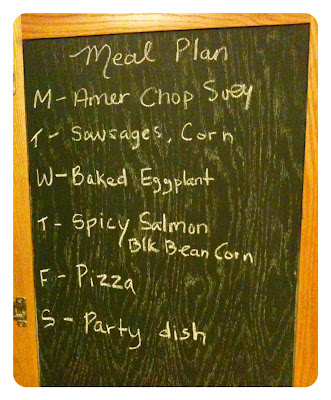Is it too hot to cook where you are? I find myself losing motivation to stay in my kitchen when it hovers above 90 degrees. Short of eating ice cream for dinner, what can we do? My plan is to mix up the routine a little this week. We are planning to try out some new items on the grill, including baby eggplant from the garden and also fresh peaches. There is also a Monday night date night planned to totally throw off the routine.
Sunday~ Grilled swordfish, local corn and baby eggplant on the grill. I learned at the farmers market it has been a very good season for eggplant so I plan to grab a few out of the garden and grill them with a little olive oil, sea salt and pepper.
Monday~ Date night! Kids will get hot dots and raw veggies.
Tuesday~ Away, but my husband will make do with leftovers/CORN and the goods from the garden.
Wednesday~ Away, eggs for my husband.
Thursday~ Hamburgers, corn and homemade coleslaw for everyone but me. Off to a girls night!
Friday~ Pizza night and grilled peaches for dessert.
 |
| Baby eggplant on it’s way to the grill |
This week in the kitchen we plan to can relish, more pickles (6 quarts done!), and salsa. The plum tomatoes are turning red and we have jalapeño peppers coming out of our ears. Just need some fresh cilantro and we will be good to go.
I have tons of sweet cherry tomatoes piling up too. Despite my best efforts, my kids still won’t eat them. I’m in search of the best way to preserve them. Can or freeze? I feel like this is my year of trial and error with the garden when it comes to maximizing what we grew. I’m tempted to try both canning and freezing to get a sense of the best way to maximize the fresh flavor. Sounds like I have post to write come January…
Are you preserving anything this season?

I love to hear your feedback and comments. Stop by and visit Facebook, Pinterest or Twitter for more conversation! Or get posts delivered via Email or RSS Feed. Thanks! For more meal planning ideas, stop by Meal Plan Monday.














